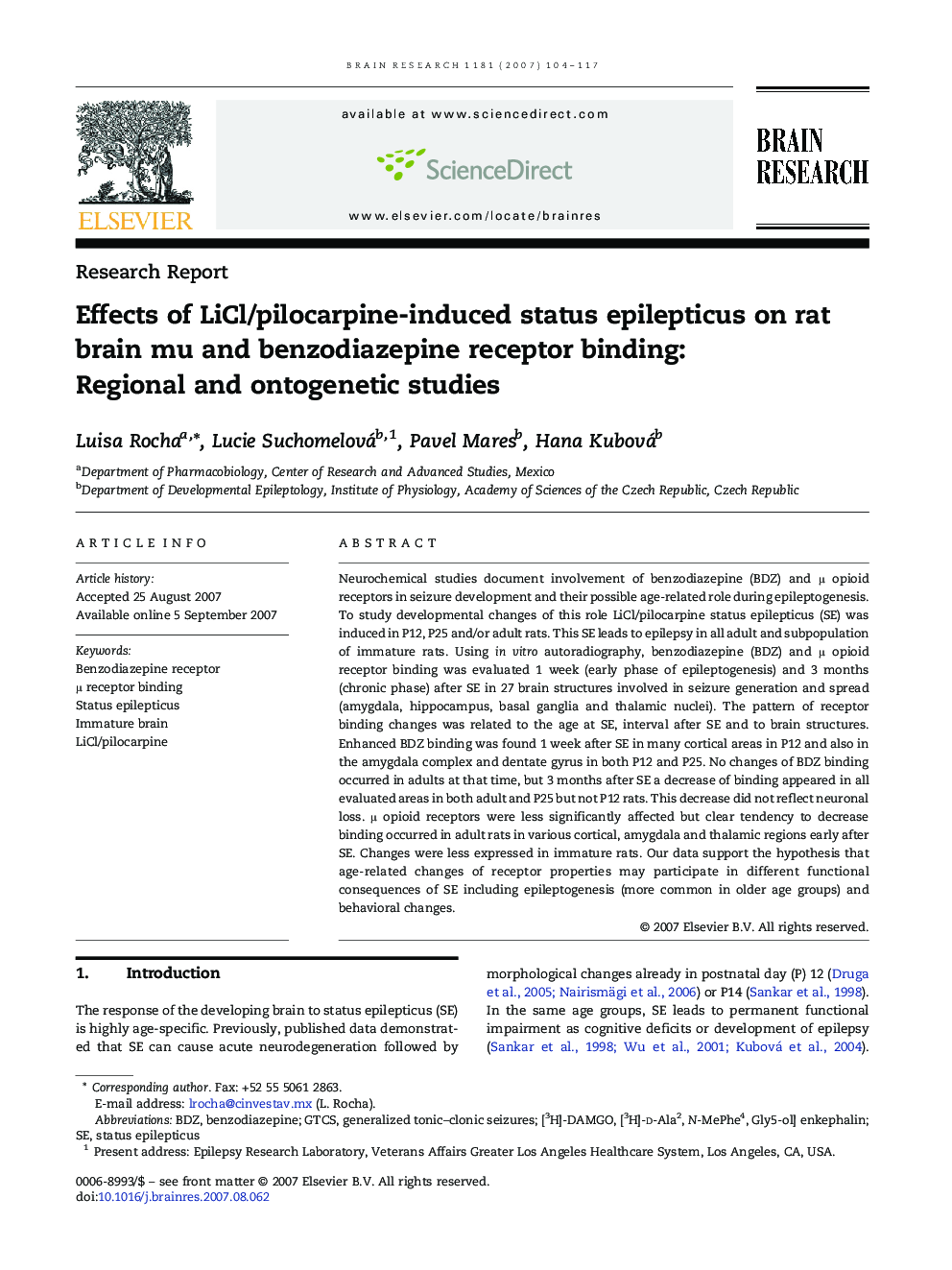| Article ID | Journal | Published Year | Pages | File Type |
|---|---|---|---|---|
| 4330413 | Brain Research | 2007 | 14 Pages |
Neurochemical studies document involvement of benzodiazepine (BDZ) and μ opioid receptors in seizure development and their possible age-related role during epileptogenesis. To study developmental changes of this role LiCl/pilocarpine status epilepticus (SE) was induced in P12, P25 and/or adult rats. This SE leads to epilepsy in all adult and subpopulation of immature rats. Using in vitro autoradiography, benzodiazepine (BDZ) and μ opioid receptor binding was evaluated 1 week (early phase of epileptogenesis) and 3 months (chronic phase) after SE in 27 brain structures involved in seizure generation and spread (amygdala, hippocampus, basal ganglia and thalamic nuclei). The pattern of receptor binding changes was related to the age at SE, interval after SE and to brain structures. Enhanced BDZ binding was found 1 week after SE in many cortical areas in P12 and also in the amygdala complex and dentate gyrus in both P12 and P25. No changes of BDZ binding occurred in adults at that time, but 3 months after SE a decrease of binding appeared in all evaluated areas in both adult and P25 but not P12 rats. This decrease did not reflect neuronal loss. μ opioid receptors were less significantly affected but clear tendency to decrease binding occurred in adult rats in various cortical, amygdala and thalamic regions early after SE. Changes were less expressed in immature rats. Our data support the hypothesis that age-related changes of receptor properties may participate in different functional consequences of SE including epileptogenesis (more common in older age groups) and behavioral changes.
